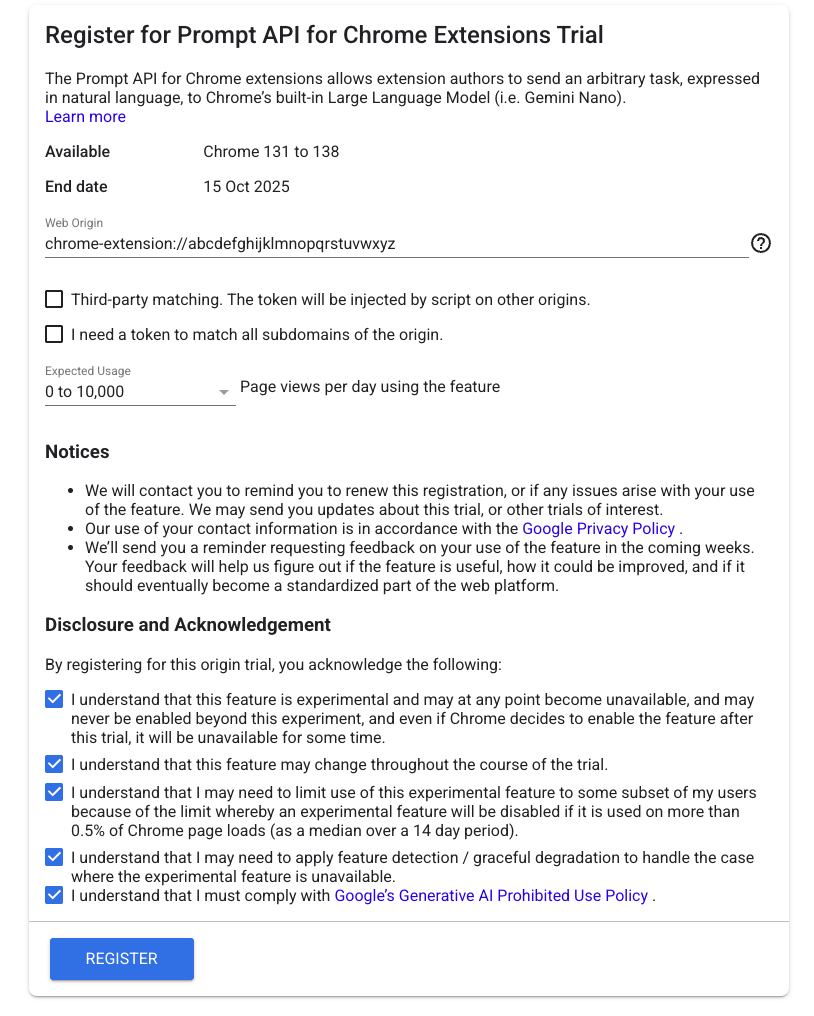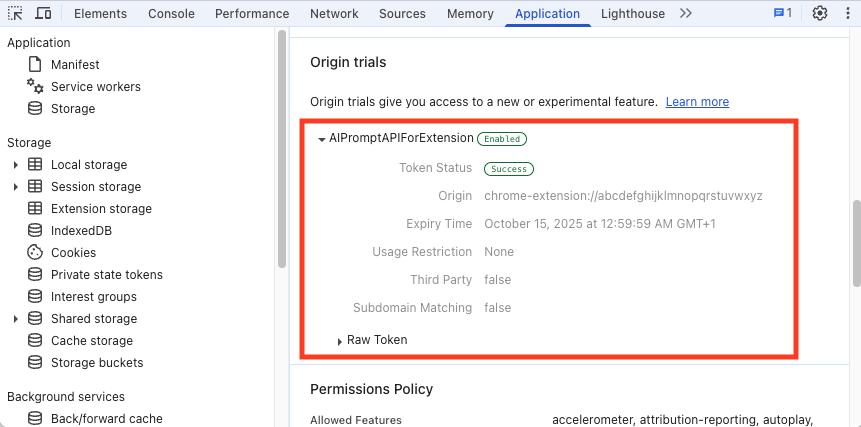Origin trials are time-limited programs open to all developers, offering early access to experimental platform features. They can be used to test a new extension API or platform behavior before enabling it by default. Since they are time-limited, you should make sure your extension continues to work even if the trial becomes inactive.
Find an active origin trial
Take a look at the full list of Chrome Origin Trials. Origin trials that are actively looking for developer feedback are usually shared proactively through blog posts or social media.
Determine your extension ID
To register for an origin trial, you need to provide an extension ID.
To make sure your extension ID is the same both during development and when you publish your extension, follow the steps to keep a consistent extension ID. If your extension is already live in the Chrome Web Store, you can follow these steps for your existing extension listing instead of creating a new one.
Register your extension
On the page for a specific trial, click Register. Keep in mind the Chrome versions where the trial is available and the end date.
Provide your Chrome Extension origin in the "Web Origin" field, for example chrome-extension://abcdefghijklmnopqrstuvwxyz.

You will receive a token that you will need to use to enable the trial in your extension.

Use the trial token
You can enable an origin trial for your extension origin or in a content script.
Extension origin
"trial_tokens": [
"[TOKEN_HERE]"
]
Some features may also require an API permission. Check the documentation for the specific trial to find out more.
To see if the trial has been enabled, check the Frames > Top tab of the Application panel in DevTools when inspecting a chrome-extension:// scheme page.

Content scripts
Content scripts run in the context of the page they are injected into, rather than your extension origin. As a result, origin trials for web features won't be active in your content script even if you have added a token to your extension manifest.
Instead, select the third-party matching option when creating a trial token:

Then, inject the token into the page:
const otMeta = document.createElement('meta');
otMeta.httpEquiv = 'origin-trial';
otMeta.content = 'TOKEN_GOES_HERE';
document.head.append(otMeta);
The origin you inject into might not have been designed to run with this origin trial active. As a result, inject with caution and consider the potential impact of doing so.
